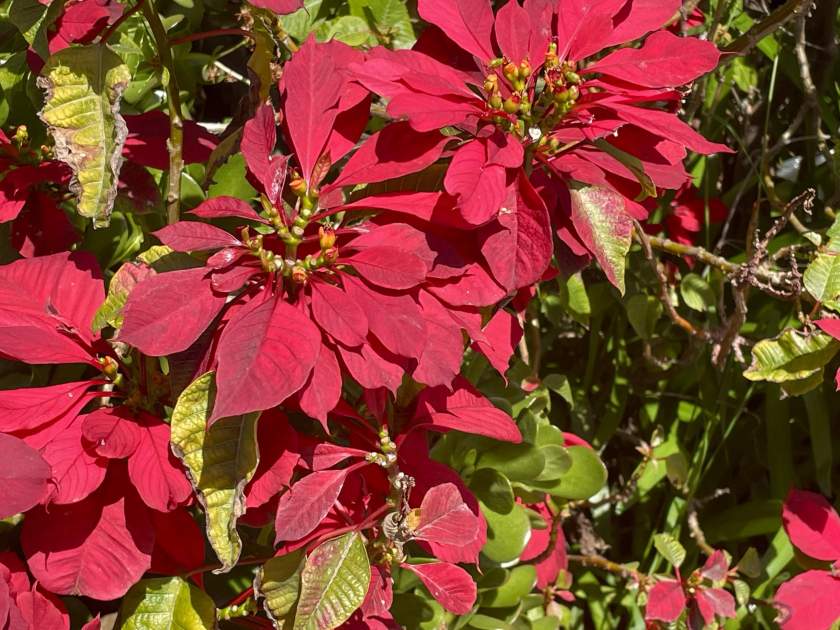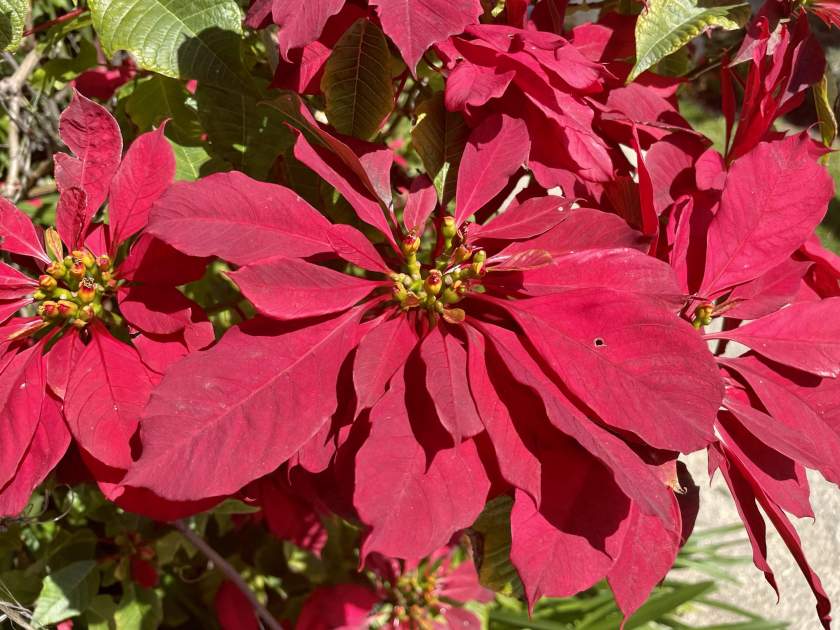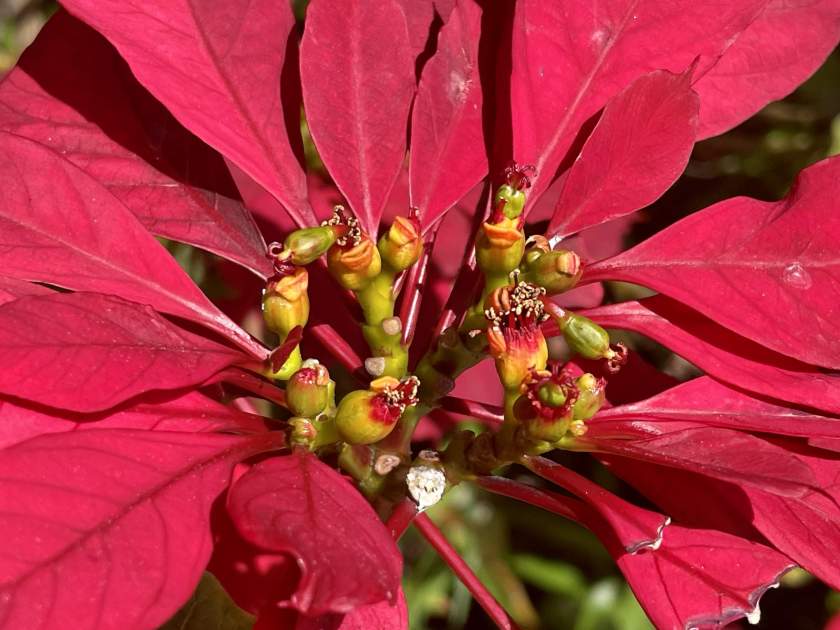The Poinsettia or Euphorbia pulcherrima is a popular and vibrant plant known for its striking red and green foliage, especially during the holiday season. It belongs to the family Euphorbiaceae and is native to Mexico, where it grows as a shrub or small tree in tropical and subtropical climates. The plant has been widely cultivated and is now popular globally as a decorative plant during the winter months.
In their natural habitat, Poinsettias grow in well-drained, fertile soils and thrive in areas with mild temperatures and moderate humidity. They prefer a subtropical climate with temperatures between 60 to 70°F (15 to 21°C) during the day and slightly cooler temperatures at night. Poinsettias are sensitive to frost and cannot tolerate temperatures below 50°F (10°C). In their native habitat, they are often found growing in open areas or in partial shade.
When growing Euphorbia pulcherrima as houseplants or as ornamental plants, there are several care considerations to keep in mind. Poinsettias require bright, indirect light for at least six hours a day to maintain their vibrant foliage color. Avoid placing them in direct sunlight, as it can scorch the leaves. It’s important to maintain a consistent temperature, avoiding drafts and extreme temperature fluctuations.
Watering is a critical aspect of Poinsettia care. The soil should be kept consistently moist, but not waterlogged. Allow the top inch of soil to dry out slightly before watering again. Overwatering or waterlogged soil can lead to root rot and other issues. It’s also important to provide adequate humidity, especially in drier indoor environments. Misting the leaves or placing a tray with water near the plant can help increase humidity.

How to prune or propagate Euphorbia pulcherrima:
Propagation of Poinsettias is primarily done through stem cuttings. To propagate, take 3 to 4-inch (7 to 10 cm) stem cuttings from the tips of healthy, mature plants. Remove the lower leaves and dip the cut end in a rooting hormone powder or gel. Plant the cutting in a well-draining potting mix and keep it moist until roots develop. Poinsettias can also be propagated from seeds, although it’s less common.
When pruning or taking cuttings from a Euphorbia pulcherrima, it’s important to be cautious to avoid the milky white sap that can be irritating to the skin and cause potential allergic reactions. Here are some tips to minimize contact with the sap:
- Wear protective gloves: Before you start pruning or taking cuttings, put on a pair of protective gloves to prevent direct contact with the sap. This will help protect your skin from potential irritation.
- Use clean and sharp tools: Use clean and sharp pruning shears or scissors to make clean cuts. This will help minimize any damage to the plant and reduce the amount of sap released.
- Cut at a 45-degree angle: When pruning or taking cuttings, make cuts at a 45-degree angle. This allows for better water absorption and reduces the surface area for sap to leak.
- Allow sap to dry: After making cuts, it’s normal for some sap to ooze out. Let the cut surfaces and stems dry for about an hour or two before handling them further. This drying time helps reduce the amount of sap that may be released when handling the cuttings.
- Wash hands and tools: After working with poinsettias, thoroughly wash your hands with soap and water to remove any sap residue. Clean your tools as well to prevent sap from sticking to them and potentially causing issues in the future.
By following these precautions, you can minimize your exposure to the milky sap and reduce the chances of skin irritation or allergic reactions. It’s always a good practice to handle poinsettias with care and take necessary precautions to ensure your safety and well-being.
Poinsettias are generally not prone to severe diseases, but they can be susceptible to some common issues. Overwatering or poor drainage can lead to root rot and fungal diseases. Avoiding overwatering and ensuring proper soil drainage can help prevent these problems. Additionally, poinsettias can be susceptible to pests such as whiteflies, aphids, and mealybugs. Regular monitoring, insecticidal soap, or other appropriate treatments can help control pest infestations.

One notable characteristic of poinsettias is their ability to change their foliage color. The bright red “flowers” are actually modified leaves called bracts, while the true flowers are small and yellow. With proper care and exposure to long nights (14 hours of uninterrupted darkness) and shorter days, poinsettias can naturally induce the development of vibrant bracts during the winter months.
In summary, Poinsettias are beautiful and iconic plants known for their red and green foliage. With proper care, including bright indirect light, consistent watering, and appropriate temperature and humidity levels, poinsettias can thrive as houseplants or decorative plants. They can be propagated through stem cuttings or seeds, and while they are generally disease-resistant, it’s important to maintain proper watering practices and monitor for pests. Poinsettias bring a festive touch to any space and are widely enjoyed during the holiday season.




